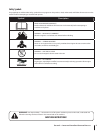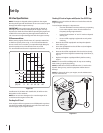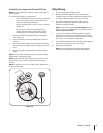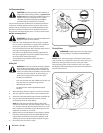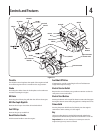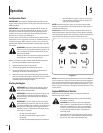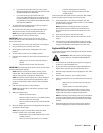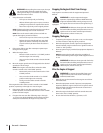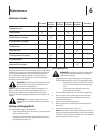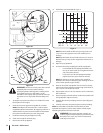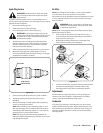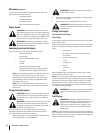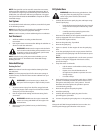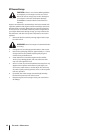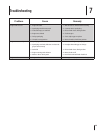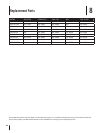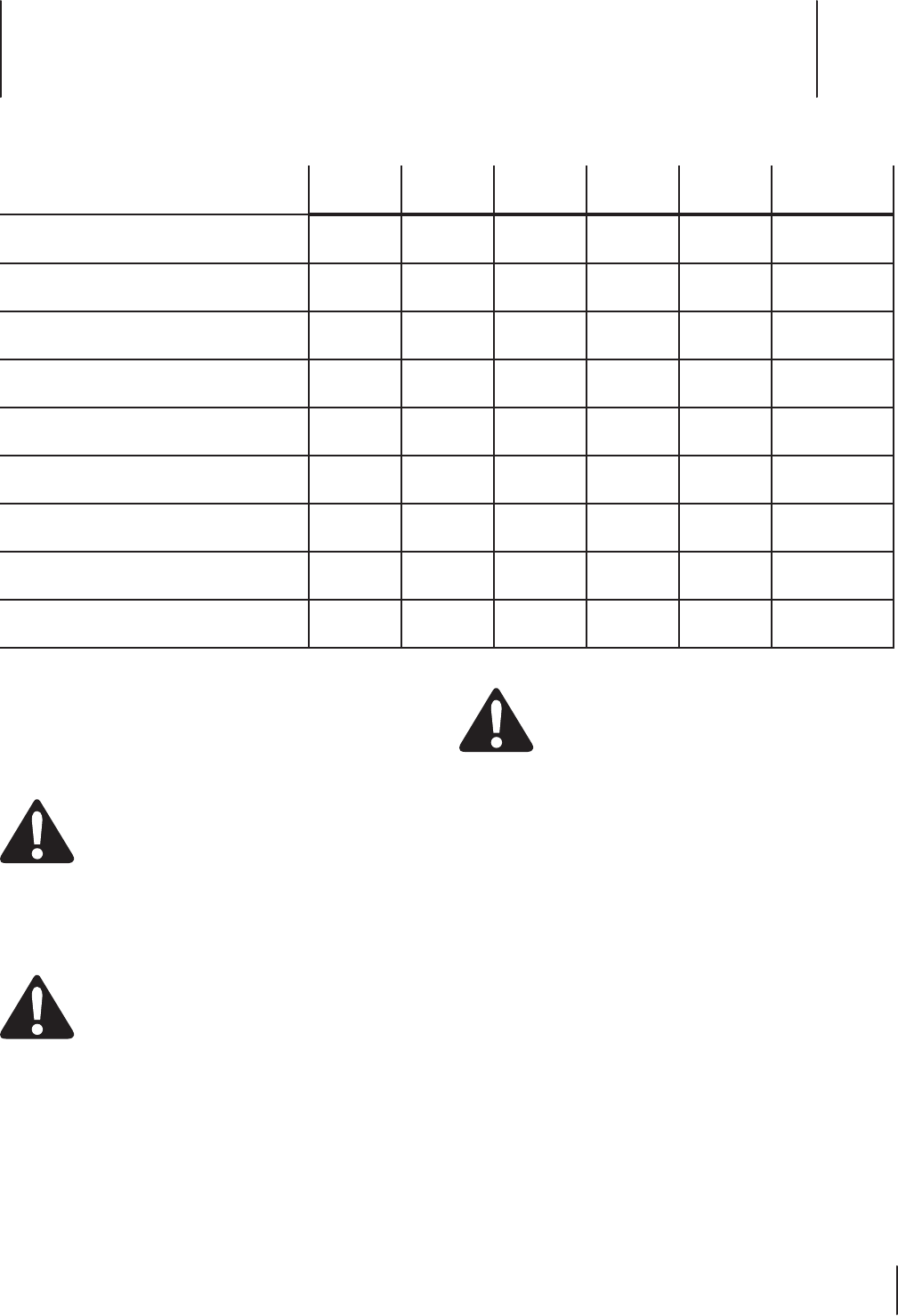
Periodic inspection and adjustment of the engine is essential if
high level performance is to be maintained. Regular maintenance
will also ensure a long service life. The required service intervals
and the kind of maintenance to be performed are described
in the table above. Follow the hourly or calendar intervals,
whichever occur first. More frequent service is required when
operating in adverse conditions.
Shut off the engine before performing
any maintenance. To prevent accidental start-up,
disconnect the spark plug boot.
NOTE: If engine must be tipped to transport equipment or to
inspect or remove grass, keep spark plug side of engine up.
Transporting or tipping engine spark plug down may cause
smoking, hard starting, spark plug fouling, or oil saturation of air
cleaner.
If the engine has been running, the
muffler will be very hot. Be careful not to touch the
muffler.
Checking and Changing the Oil
To avoid engine damage, it is important to:
Check oil level before each use and every 5 operating hours
when the engine is warm.
Change the oil after the first 5 operating hours and every
50 operating hours thereafter. Engine should still be warm
but NOT hot from recent use.
Oil Fill Cap and Dipstick
Before tipping engine or equipment to
drain oil, drain fuel from tank by running engine
until fuel tank is empty.
Carefully disconnect the spark plug wire and keep it away 1.
from the spark plug. Refer to Fig. 6-1 for spark plug location.
Keep the disconnected spark plug wire securely
away from the metal parts where arcing could
occur.
Carefully attach the spark plug wire to the
grounding post, if provided.
Be sure that the fuel fill cap is on and securely tightened.2.
Be sure to find correct oil drain plug location, if present 3.
(see the equipment Operator’s Manual instructions for
additional information).
Clean area around the oil drain plug. 4.
Place an approved recyclable oil container under the oil 5.
drain plug.
Remove the Oil drain plug. See Fig. 6-2.6.
NOTE: Depending on which engine model you have, the oil
plug may be positioned differently. These positions include
on the front and/or rear side of the block, or as an extended
tube. Examples are shown in Fig. 6-2.
Maintenance Schedule
First 5 Hours
Each Use or
Every 5 Hrs.
Every Season
or 25 Hours
Every Season
or 50 Hours
Every Season
or 100 Hours
Service Dates
Check Engine Oil Level
P
Change Engine Oil
P P
Check Air Cleaner (If so equipped)
P
Service Air Cleaner (If so equipped)
P
Check Spark Plug
P
Replace Spark Plug
P
Clean Engine Shroud (If so equipped)
P
Clean around muffler
P
Replace Fuel Filter (If equipped)
P
Maintenance
6
13



